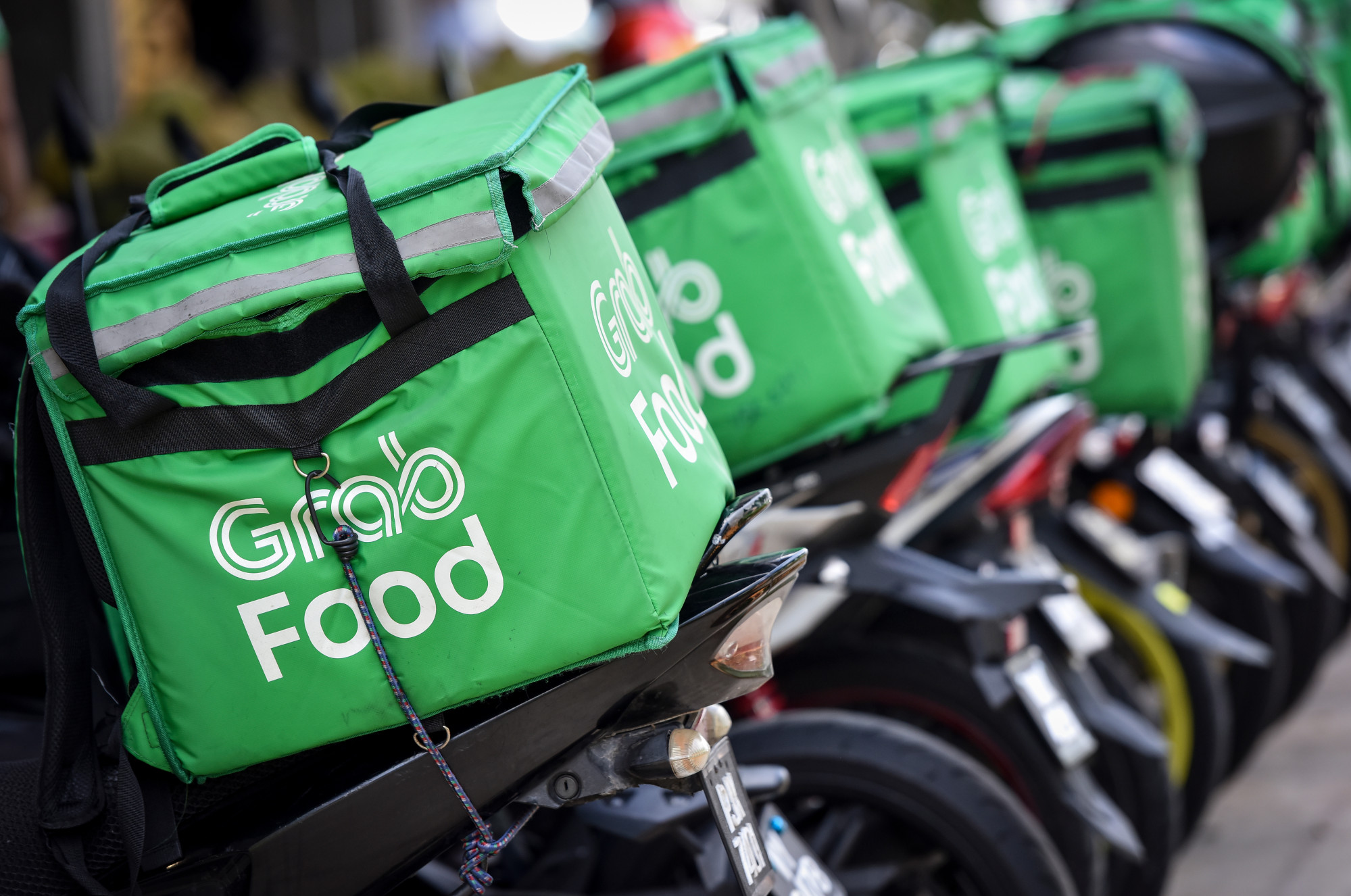
After Grab’s back door US listing, will SPACs take off in Hong Kong and Singapore?
- Listings of special purpose acquisition companies are gaining momentum in both Asian financial hubs, injecting life into the bourses – but will the buzz last?
- Hong Kong will appeal to SPACs from mainland China, while Singapore offers an entry point to the Asia-Pacific, though stricter regulations may turn off some investors
Last December, ride-hailing and delivery giant Grab made history with its back door listing on the Nasdaq stock exchange. It was the biggest US listing by a Southeast Asian firm and also the world’s largest special purpose acquisition company (SPAC) deal, valued at US$40 billion.
The landmark listing came after Grab’s successful merger with blank-cheque company Altimeter Growth Corp, joining a list of headline SPAC deals in the past year. Others involved EV start-up Lucid Motors and SoFi Technologies, a financial services firm.
Hong Kong’s first SPAC, Aquila Acquisition, made its trading debut last week, with professional investors ploughing over HK$1 billion (US$128.3 million), the minimum listing threshold.
The cash would be used to buy assets in the new economy sector, the company said.
The initial momentum and potential have been strong
Access to the region
SPAC listings are not new for Western exchanges but are relatively fresh in Asia. The SGX became the first Asian bourse to introduce a SPAC framework last September, with its regional rival, the Hong Kong Exchanges and Clearing (HKEX), following suit in December.
Stephen Bates, head of transaction services and deal advisory for KPMG Singapore, pointed to an increasing interest in companies opting to go public via SPACs. “It simplifies and expedites the whole process of going public and raising capital,” he said.
Lawrence Loh, a business professor at the National University of Singapore, said firms wanting to list in Asia would have “regionally oriented interests”. “It’s about access to investors and proximity to consumers. Hong Kong and Singapore serve well on these counts if the SPAC wants to maintain its Asian footprint,” he explained.
Those that list in Singapore would likely be looking for access to the Asia-Pacific region as well as eyeing the stable environment and ease of doing business in the city state, Bates said. He expected the blank-cheque firms listed in Singapore to target emerging tech and health care companies.
Asia’s high growth and mature start-ups would be suitable targets, Bates said, adding that listing within the region would provide local retail investors the opportunity to invest in companies they were familiar with. This would offer the company greater visibility, especially if it has a business model or customer base concentrated in Asia.
Why Singapore tech giant Sea is making waves in Southeast Asia
There is much to celebrate. Loh said enabling SPAC listings had widened the options of companies seeking equity financing. He said it would not be a “spectacular game changer” in any stock market, but could – at the least – lift the SGX, which has struggled to attract listings in recent years.
“The initial momentum and potential have been strong. Market sentiments are also favourable,” Loh said.
Bates agreed. Singapore, he said, would benefit from having a head start for SPACs regionally, and that could act as a catalyst to the city state’s IPO market. “This will likely have a positive flow-through effect for the traditional IPO market and help rather than discourage companies seeking traditional IPOs,” he said.

Strict regulatory environment
Yet, some analysts were more cautious in their reading of the initial buzz, wary that the stricter regulations in Asia could turn investors away.
Singapore currently has a framework similar to that of the US but the HKEX in Hong Kong generally has more stringent rules governing SPAC listings. For example, unlike the SGX and other American bourses, HKEX does not allow the participation of retail investors.
Also, the minimum market capitalisation required for a blank-cheque firm to list on the SGX and the New York Stock Exchange (NYSE) is S$150 million (US$110 million) and US$100 million respectively but companies would need a higher market cap of HK$1 billion (US$128 million) to list on the HKEX.
There are also stricter rules on shareholder distribution in Hong Kong, including how the firm needs a minimum of 75 professional investors.
Ringo Choi, Asia-Pacific IPO leader at EY, said the rules were in place to protect investors but suggested that “such stringent policies may surely affect how easily SPACs can be created”.
Is the party over in Southeast Asia’s post-coronavirus tech scene?
Particularly, he cited how the absence of public investors would make the listing of shell firms “less popular”, adding that some of these rules meant reduced flexibility for investors.
The current regulatory environment, Choi said, was “not attractive enough” for firms. He said he would recommend Hong Kong regulators relax rules and move towards the framework adopted in the US. “The regulations right now are too tough, I’d say.”
But KPMG Singapore’s Bates said stricter rules had merit as working as a “control at the gate”. The regulatory environment would also be important in building Singapore’s reputation as a listing destination, he said.
He felt that the Singapore framework found a balance between establishing adequate safeguards to protect investors and promoting the competitiveness of its capital markets.
Other analysts also suggested that SPAC firms could face difficulties securing good target companies. Justin Hall, a partner at Golden Gate Ventures, said SPACs in the US – despite having more specialists who understand the mechanics – have had “enormous difficulty” finding suitable investment candidates and he believes similar challenges remain in Asia.
“You need to find companies that are valued sensibly, without any significant red flags within their business or financials, and which can be packaged for retail investors,” he said. “Given the failure of many SPACs to actually find good targets, it’s clear that this is still a problem that hasn’t been resolved today.”

The future of SPACs
Analysts were largely confident that the spurt of SPAC listings in Asia could be maintained – though they added that much hinged on whether the first wave of shell firms would succeed.
Bates said the growth of the SPAC market would be driven by successful de-SPACs – referring to the transaction or merger of the shell firm and the selected private entity – and their post-IPO share price performance. It was important, he said, for SPACs to have quality sponsors so they were viewed positively by targets looking to list.
“Current market dynamics are primed to enable SPACs to take place and this momentum is expected to carry on for some time, bolstered by strong interest in regional tech companies, who tend to favour the SPAC route,” he said.
Hall from Golden Gate Ventures said that the key lay in whether SPAC firms could hunt down targets in the region that aligned with their valuation expectations. If that happened, transactions would proceed and the momentum would continue to build.
How Chinese money is driving Southeast Asia’s start-up scene
Johnson Chui, co-head of Asia-Pacific equity capital markets at Credit Suisse, said the objective for SPACs in Asia was slightly different than for those in the US. “We feel there will be a lower number of SPACs in Asia but their quality will be higher with targets [that are] more relevant for the respective local exchanges.”
Similarly, Ho Cheun Hon, head of Southeast Asia equity capital markets at Credit Suisse, said regulators in Singapore were focused on the quality, rather than the quantity, of listings.
The recent developments have been encouraging. Sponsors have been putting more skin in the game beyond the minimum regulatory requirements and there has been “healthy interest” across the investor spectrum, from international institutional fund managers to private investors including family offices, he said.
Added Ho: “All these factors enhance the likelihood of eventual business combinations [known as de-SPACs], resulting in high-quality listed companies in interesting sectors with broad-based public shareholding and the ability to deliver returns,” Ho said.
Lawrence Loh, the NUS business professor, said it was too early to discern any trend forward for the Singapore and Hong Kong SPAC listings. But he was confident that the Asian markets would observe an “eclectic range of listings”.


